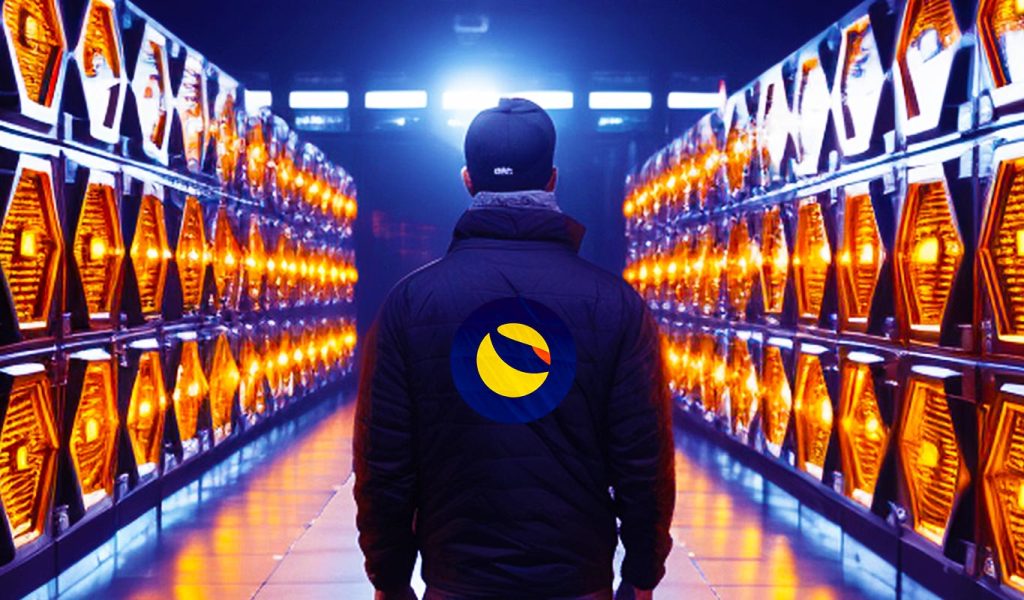
Disgraced Terraform Labs founder Do Kwon is reportedly asking a judge to delay the U.S. Securities and Exchange Commission’s (SEC) trial to March so he can make an appearance. In a new letter addressed to the court uncovered by Inner City Press, Kwon’s lawyers ask District Judge Jed S. Rakoff to postpone the trial until […]
The post Terraform Labs Founder Do Kwon Asks US Judge To Postpone SEC Trial Amid Extradition Delays: Report appeared first on The Daily Hodl.

U.S. prosecutors are reportedly not pursuing a second trial against disgraced FTX founder Sam Bankman-Fried. According to a new report by Reuters, in a recently penned letter to a federal court in Manhattan, the prosecutors say that the benefits of a second trial outweigh the public’s strong interest in a prompt resolution in the case […]
The post U.S. Prosecutors Won’t Pursue Second Trial Against FTX Founder Sam Bankman-Fried: Report appeared first on The Daily Hodl.

New data reveals that the Federal Bureau of Investigation (FBI) collected transactional data of FTX customers as the troubled crypto exchange went through its bankruptcy proceedings. According to new billing documents from consultancy group Alvarez and Marshal, advisers for FTX have been gathering transactional data to comply with subpoenas from at least five different FBI […]
The post FBI Collected Transactional Data of FTX Customers During Bankruptcy Proceedings, According to Billing Records appeared first on The Daily Hodl.

Sam Bankman-Fried’s criminal trial has concluded with a jury finding him guilty of all seven charges.
Former FTX CEO Sam Bankman-Fried has been found guilty of all of the seven charges in his criminal trial by a jury in New York.
Bankman-Fried was found guilty of two counts of wire fraud and two counts of wire fraud conspiracy along with one count of securities fraud, one count of commodities fraud conspiracy and one count of money laundering conspiracy.
He will return to court for sentencing by New York District Judge Lewis Kaplan at a later date.
Bankman-Fried’s crimes total a maximum of 110 years in prison with the wire fraud, wire fraud conspiracy and money laundering conspiracy carrying a maximum 20-year sentence.
Other key FTX executives including former Alameda CEO Caroline Ellison, FTX co-founder Gary Wang and former FTX engineering head Nishad Singh have all pleaded guilty to various charges and worked with the government to testify against Bankman-Fried.
Related: ‘Fuck regulators,’ said SBF behind closed doors: Report
Bankman-Fried had previously pleaded not guilty to all charges and during his trial, he took the stand to maintain his innocence and mark up FTX’s November 2022 collapse as "a number of big mistakes." He denied any wrongdoing in FTX’s relationship with Alameda and attempted to distance himself from key decisions.
Bankman-Fried pinned the blame on Wang for creating a function that allowed Alameda to trade funds on FTX that it didn’t have and claimed he “wasn’t entirely sure what happened” with Alameda’s line of credit, which ballooned to billions in the collapsing crypto market of 2022.
Magazine: Blockchain detectives — Mt. Gox collapse saw birth of Chainalysis
This is a developing story, and further information will be added as it becomes available.
Additional reporting by Ana Paula Pereira.

The attorneys of disgraced FTX founder Sam Bankman-Fried argued that the prosecution is unfairly painting the defendant as a “monster” as the trial closes. According to a Reuters report, Mark Cohen, Bankman-Fried’s lawyer, addressed the jury and said that the prosecution elicited testimony about the defendant’s sex life and appearance in an attempt to paint […]
The post Sam Bankman-Fried’s Lawyers Claim Prosecution Painted Him as a ‘Monster’ in FTX Fraud Trial’s Closing Arguments appeared first on The Daily Hodl.

“He knew what he was doing was wrong; that’s why he never hired a risk officer,” U.S. Assistant Attorney Danielle Sassoon said.
The government presented its rebuttal against Sam Bankman-Fried on Nov. 2 in response to statements made by his defense during the closing arguments a day earlier.
A jury of 12 will receive final instructions in the Southern District Court of Manhattan on Nov. 2. The jury will receive pizza and transportation if their verdict comes after court hours, according to District Court Lewis Kaplan.
As the trial of @SBF_FTX draws near its conclusion, the prosecution and defense lay down their final arguments. https://t.co/csFJ5AAZxm
— Cointelegraph (@Cointelegraph) November 1, 2023
Speaking on the court, U.S. Assistant Attorney Danielle Sassoon claimed prosecutors “met the burden” of proving that Bankman-Fried is guilty of seven counts of fraud and conspiracy to commit fraud.
According to Sassoon, the former FTX CEO gave customers, investors and the media the false impression that assets held at FTX were safe and that Alameda Research had no involvement with the funds.
Sassoon pointed to Bankman-Fried’s tweets and public statements made in the months and weeks before FTX’s collapse, including claims that customers’ funds were held in segregated accounts when, in reality, they were being used by Alameda Research.
Sassoon also refuted the defense’s argument that Bankman-Fried made public appearances in the media after FTX’s collapse, claiming his interviews and tweets used to make him look reliable at a time his exchange wasn’t able to pay back its customers.
“He didn’t want to be a criminal on the run,” she noted, adding that Bankman-Fried had the ambition to be president of the United States. "He lied to get customers’ trust."
The prosecution went over spreadsheets to refute claims that Bankman-Fried didn't know about Alameda’s multi-billion-dollar line of credit and repayment of lenders with customer funds, adding that Bankman-Fried thought customer funds were his “piggy bank.”
According to Sassoon, the defense's assertion that the government painted Bankman-Fried as a monster during closing arguments the day before was “desperate.”
“They were acting at the defendant’s direction,” Sassoon said about Caroline Ellison, Gary Wang and Nishad Singh.
Bankman-Fried's former inner circle cooperated with the government and testified in the case. During closing arguments, defense attorneys tried to disqualify their testimony, claiming it was made under a strict cooperation agreement with federal prosecutors.
The defense, according to Sassoon, wanted the jurors to believe that Bankman-Fried was clueless about what was going on with Alameda and FTX. “It's absurd,” said the U.S. attorney, claiming the defense's claims contradicted the evidence.
Related: Sam Bankman-Fried ‘doubled down’ by buying Binance’s stake in FTX — US prosecutors
The FTX strategy, Sassoon said, was to not hire a risk officer to ensure nobody found out about deleted messages and embezzlement.
“He knew what he was doing was wrong; that’s why he never hired a risk officer,” she told the jury.

The prosecutors in the FTX fraud trial say that disgraced Sam Bankman-Fried is guilty beyond reasonable doubt following his testimony in court. In new court transcripts reported by Inner City Press, Assistant Attorney of the United States Nicolas Roos addresses the jury and argues that Bankman-Fried is guilty on every single one of his charges. […]
The post Prosecutors Say Sam Bankman-Fried Is ‘Guilty Beyond Reasonable Doubt’ in Closing Statements appeared first on The Daily Hodl.

The former FTX CEO reportedly said the donations made in his name came from “loans from Alameda Research” as part of efforts to influence U.S. regulations on crypto.
Sam “SBF” Bankman-Fried’s defense attorney Mark Cohen heard testimony from the former FTX CEO on his relationship with Caroline Ellison and political donations from the crypto exchange.
According to reports from the courtroom on Oct. 27, Bankman-Fried claimed not to have discussed donations to U.S. politicians with former FTX engineering director Nishad Singh and former FTX Digital Markets co-CEO Ryan Salame. SBF reportedly said the donations made in his name came from “loans from Alameda Research” as part of efforts to influence U.S. government’s policies on regulating crypto.
“[...] I thought policy was important. Congress and the executive branch… Some were [supportive of] FTX for cryptocurrency lobbying. Some, not most.”
Cohen also posed more personal questions seemingly unrelated to the allegations SBF was facing in court. The defense lawyer asked Bankman-Fried what led to the end of his relationship with Ellison.
“She wanted more than I could give,” the former FTX CEO reportedly said, referring to Ellison. “It wasn’t the first time with me.”
During her testimony, Ellison said the relationship ended as SBF “wasn’t spending much time” with her. Cohen asked the former FTX CEO the reasons behind his style, with SBF replying his hair was the result of him being “lazy” while he found wearing shorts and T-shirts on most occasions “comfortable.”
Related: Sam Bankman-Fried trial moves to final stages
In earlier testimony on Oct. 27, the former CEO reportedly denied defrauding FTX users by directing efforts at Alameda allowing the firm to use customer funds. Former FTX chief technology officer Gary Wang and others offered testimony claiming SBF had given Alameda the ability to trade more funds than it had available.
Bankman-Fried's testimony will likely end by early next week following cross-examination by attorneys with the U.S. Department of Justice. Barring addressing any motions or legal hiccups, the court will then likely instruct the jury to deliberate on the seven criminal charges.
Magazine: Can you trust crypto exchanges after the collapse of FTX?

As the final witness in his defense case, the former FTX CEO placed some of the blame for the crypto exchange’s failure on Gary Wang and Nishad Singh.
The jury overseeing the criminal trial of Sam “SBF” Bankman-Fried listened to the former FTX CEO’s testimony for the first time, which involved largely denying knowledge of fraudulent activities at the crypto exchange.
According to reports from the New York courtroom on Oct. 27, Bankman-Fried suggested Wang, the former chief technology officer at FTX, had been partly responsible for creating the “allow negative” button for Alameda Research. The feature gave the crypto hedge fund the ability to trade more funds than it had available.
“At the time, I wasn’t entirely sure what was happened,” Bankman-Fried reportedly said regarding Alameda’s line of credit. “I thought the funds were being held in a bank account, or sent to FTX in stablecoins. If Alameda was keeping it, I figured it would be reflected as a negative number on FTX.”
On former Alameda co-CEOs Caroline Ellison and Sam Trabucco, Bankman-Fried reportedly said they were “a good team” but criticized Ellison’s experience:
“Caroline was a good manager, empathetic. She was not a software developer. She was good at doing research. She had not focused on risk management.”
This is a developing story, and further information will be added as it becomes available.

The former FTX CEO took the stand for the first time in his criminal trial, but without members of the jury present.
Former FTX CEO Sam “SBF” Bankman-Fried addressed a New York courtroom under oath without the 12-member jury present.
According to reports from the courtroom on Oct. 26, SBF’s highly anticipated testimony kicked off in a hearing with defense attorney Mark Cohen questioning the former FTX CEO on his use of the messaging app Signal and retention of communications data at the crypto exchange. Bankman-Fried reportedly claimed he acted in accordance with company policies on records, and none of the media set to “auto-delete” were “channels for decisions.”
“Why did you turn off auto-delete?” Cohen asked Bankman-Fried.
“I had heard from regulators,” he replied.
Cohen pressed the former FTX CEO on the creation of North Dimension, an alleged “shadowy entity” used to launder customer funds from the crypto exchange through Alameda Research. According to SBF, former chief regulatory officer Dan Friedberg provided him with the papers setting up the firm, which he signed without question.
“Did you believe taking FTX deposits through Alameda was legal?” Cohen asked SBF.
“I did,” he replied.
“I was CEO of both at that time,” said Bankman-Fried on establishing North Dimension under Alameda and FTX. “FTX didn’t have a bank account.”
One of the key issues in the U.S. government’s case against SBF centers around allegations the former FTX CEO used customer funds from the crypto exchange to make investments through Alameda without users’ knowledge. Bankman-Fried testified that he communicated with Friedberg, law firm Fenwick & West, and FTX former general counsel Can Sun regarding the investments.
“I thought, only to futures trading,” said Bankman-Fried on parts of FTX’s terms of services concerning the use of customer funds. “And Alameda was authorized to do that.”
Related: Sam Bankman-Fried has no way to ‘outfox’ prosecutors: Scaramucci
Bankman-Fried will be the last witness to take the stand after more than three weeks in court laying out details of the alleged commingling of funds between FTX and Alameda. According to Kaplan, the jury will “decide in the first few days of next week” without hearing the entirety of the former FTX CEO’s testimony.
SBF has pleaded not guilty to all seven charges in his criminal case, but he is expected to face five more counts in a second trial scheduled to start in March 2024.
Magazine: Can you trust crypto exchanges after the collapse of FTX?
This is a developing story, and further information will be added as it becomes available.